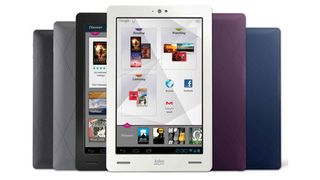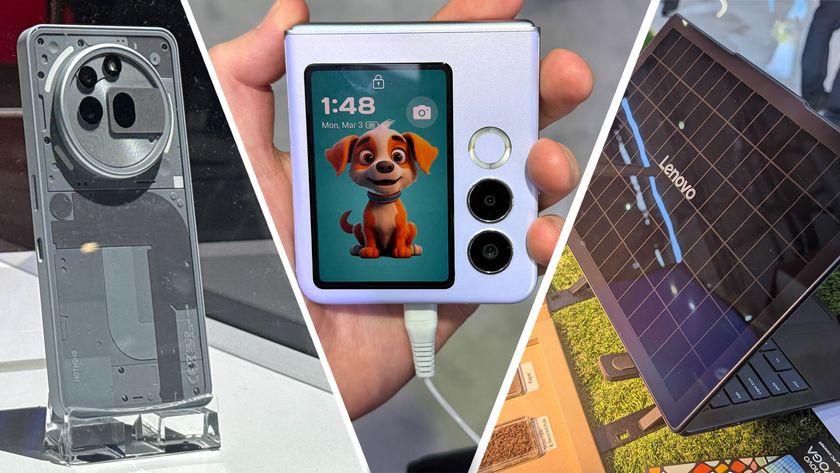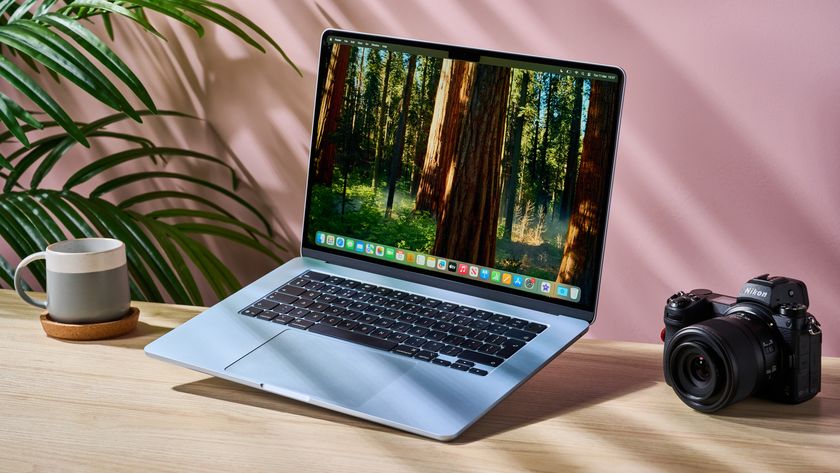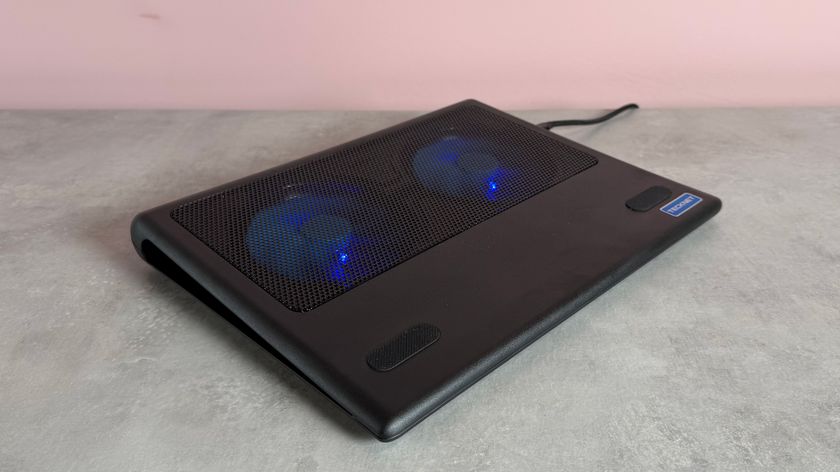TechRadar Verdict
Pros
- +
Google Play apps
- +
Tapestries interface
- +
Processing speed
- +
Reading
Cons
- -
Lacks Bluetooth & HDMI out
- -
No rear-facing camera
- -
No micro SD card slot
- -
Average design
Why you can trust TechRadar
Kobo is a brand better known for producing budget alternatives to original E-Ink-based Kindle et al, but can the all-new Arc tablet take the fight higher to the Kindle Fire HD and even the Nexus 7 and iPad Mini?
If you've seen Kobo's previous tablets, it's likely you were in WHSmiths, which actively promotes and sells all Kobo tablets and eReader in its high street shops – including the Arc.
The headline feature on this 7-inch, 1280 x 800 pixel tablet is a 1.5GHz dual-core processor, though just as standout when compared to eReader-style tablets (principally the Nook HD and the Kindle Fire HD) is the Arc's open Android experience - now Android 4.1 Jelly Bean, following an update in April 2013 - and we've updated our review to reflect this change.

Sure, it's augmented rather nicely by the double-act of both Tapestries (a noticeboard-style interface that permits extensive customisation) and a Discovery 'web concierge' feature that recommends websites as well as e-books, but it's the Arc's ability to download any app from Google Play that most appeals.
And, yes, that does mean a whole host of games as well as apps for Kindle and Nook, its two main rivals. That completely open attitude does suggest that if the Arc's performance matches-up to its specs it could render its rivals' locked-in experiences rather pointless, especially as it's identically priced.

Although a 64GB version is manufactured by Kobo – and we've seen a price of £230 for that – WHSmiths is currently selling 16GB (£159.99) and 32GB (£189.99) models in both black and white versions. At present there is no 3G option, though that could change.
We're guessing that Kobo is gunning for a quasi-academic status with this 7-inch tablet; its relatively thick (10mm wide at the sides, and 13mm/19mm at the top/bottom) matt black plastic bezel gives the 189 x 120 x 115mm, 364g Kobo Arc a rather industrial look to it.

Furthermore, the opportunity to swap-out the back cover (though only to blue or purple) creates an impression that the Kobo Arc is a tablet for kids.
The 1,280x800 pixel screen (that's 215 PPI) has an unusually wide viewing angle, so much so that it's almost impossible to detect any draining of colour or contrast when viewed from odd angles.
That's thanks to an IPS (In-Place Switching) panel, which is fast becoming standard in tablets.

An unbeatably powerful 1.5GHz dual-core processor and 1GB RAM are good enough specs meaning the Arc rarely misses a beat when swiping or loading apps, and never freezes-up. However, this does pale in comparison to the quad-core innards of the likes of the Nexus 7.
However, there are weaknesses. There's no Bluetooth, which could have turned the Arc into a fully fledged productivity tablet by adding a Bluetooth keyboard or wireless headphones.
Nor is there a micro SD card slot for expanding the storage, so you'll have to choose wisely from the off - but then again, its rivals are shorn of such a port too.

Physical buttons are few, with a standby switch on the top, and a volume rocker on the upper right-hand side below a headphones slot.
Front-facing speakers adorn the lower bezel, while between them on the undercarriage is a micro USB slot for recharging and transferring files via an included micro USB cable.
All models of the Kobo Arc are Wi-Fi only – and all lack an HDMI output to chuck your content onto a bigger screen, which may irk some if the effort by Amazon to convince users tablets should be plugged into a TV takes off. There are always wireless apps to help out, but these can be confusing to the technologically naive.
Jamie is a freelance tech, travel and space journalist based in the UK. He’s been writing regularly for Techradar since it was launched in 2008 and also writes regularly for Forbes, The Telegraph, the South China Morning Post, Sky & Telescope and the Sky At Night magazine as well as other Future titles T3, Digital Camera World, All About Space and Space.com. He also edits two of his own websites, TravGear.com and WhenIsTheNextEclipse.com that reflect his obsession with travel gear and solar eclipse travel. He is the author of A Stargazing Program For Beginners (Springer, 2015),













Researchers want to embrace Arm's celebrated paradigm for a universal generative AI processor; a puzzling MEGA.mini core architecture

Quickbooks vs Quicken: what are the main strengths and weaknesses for your business

I visited the world’s first registered .com domain – and you won’t believe what it’s offering today







